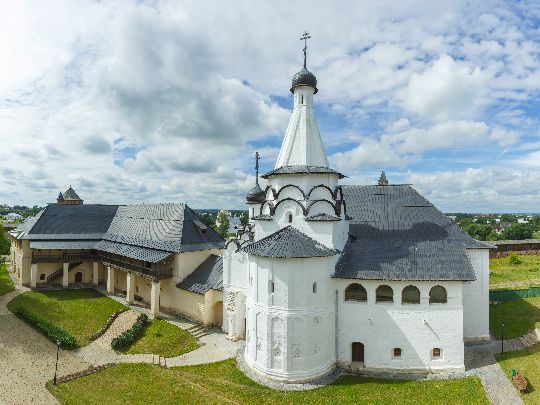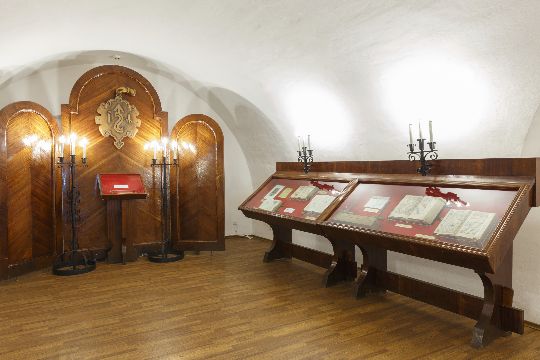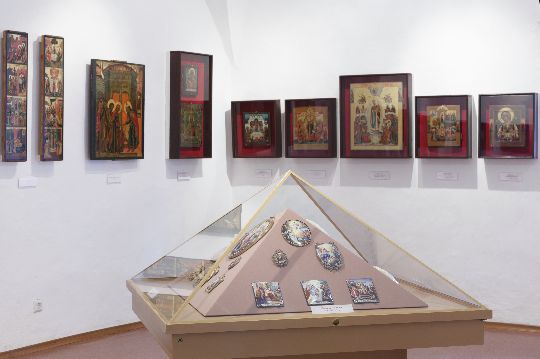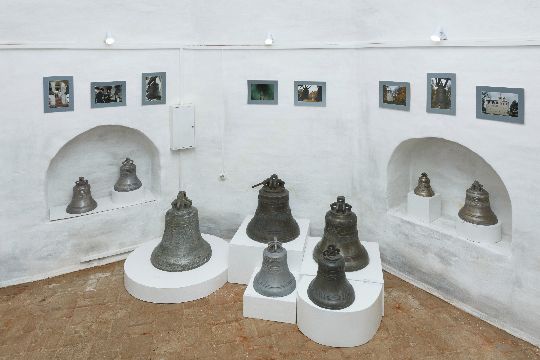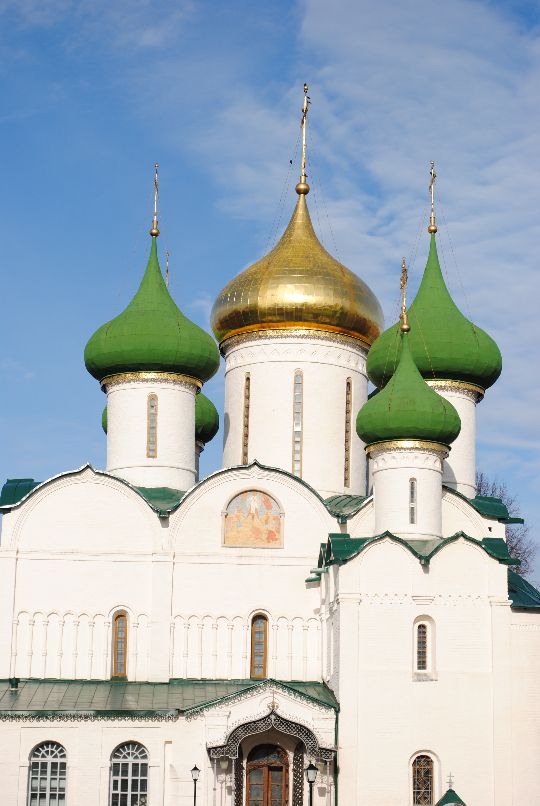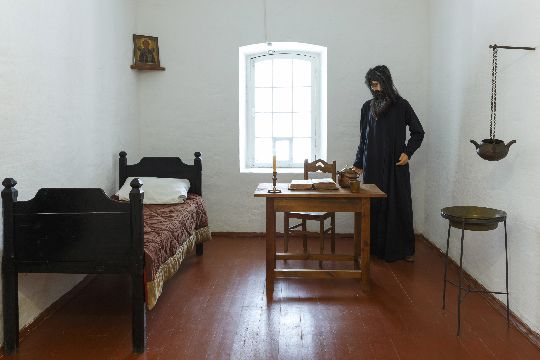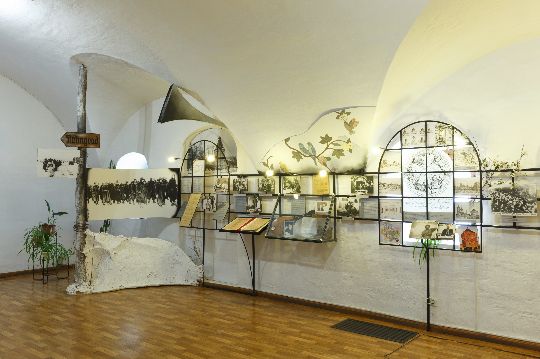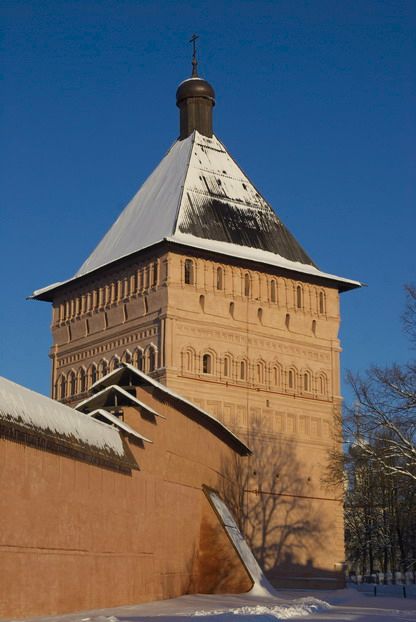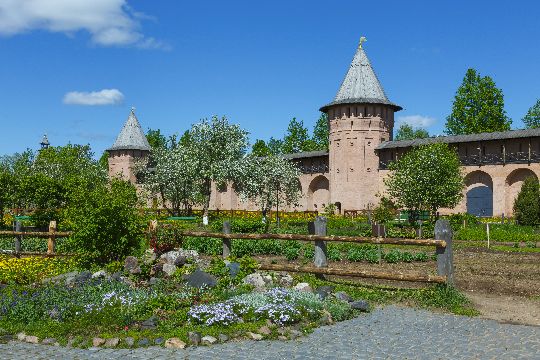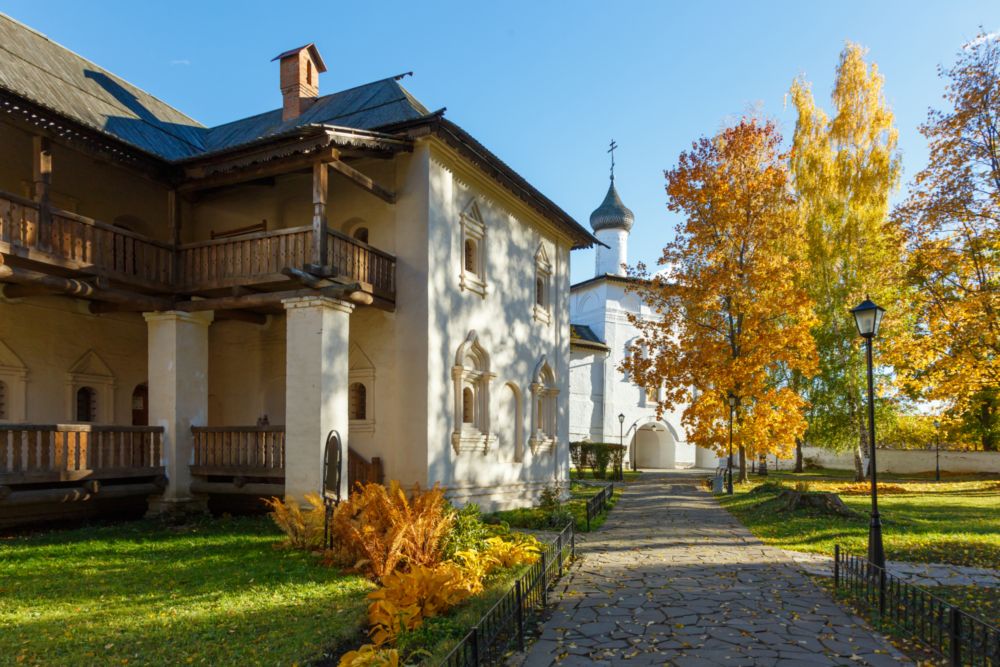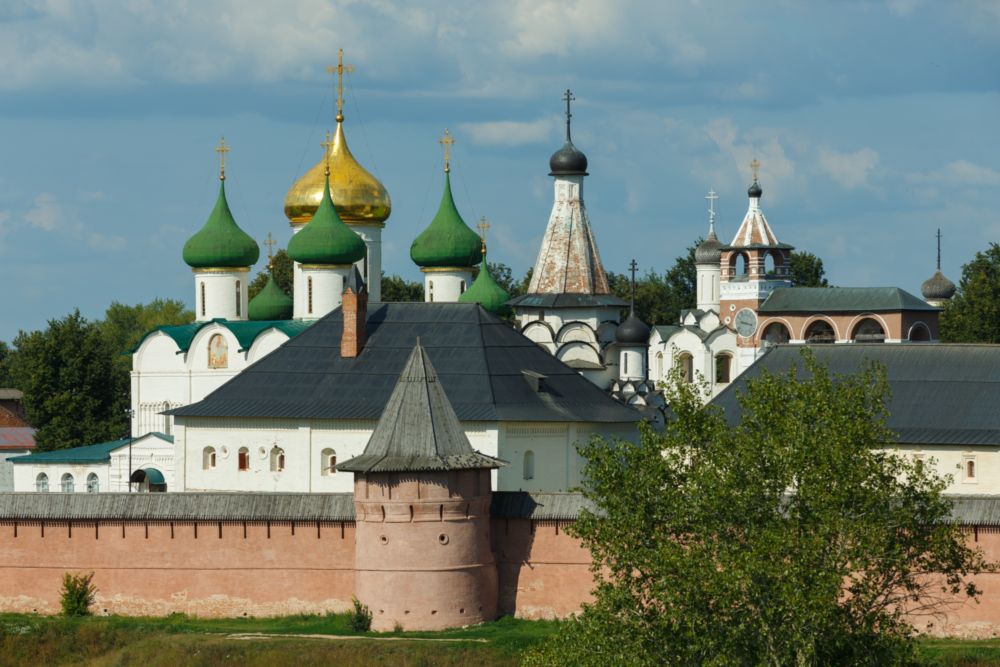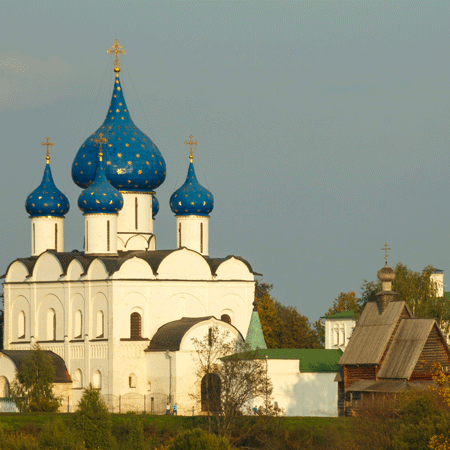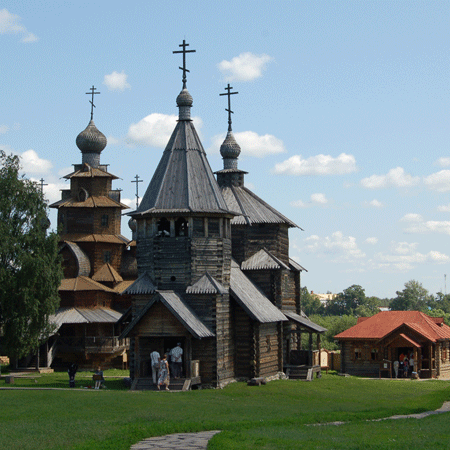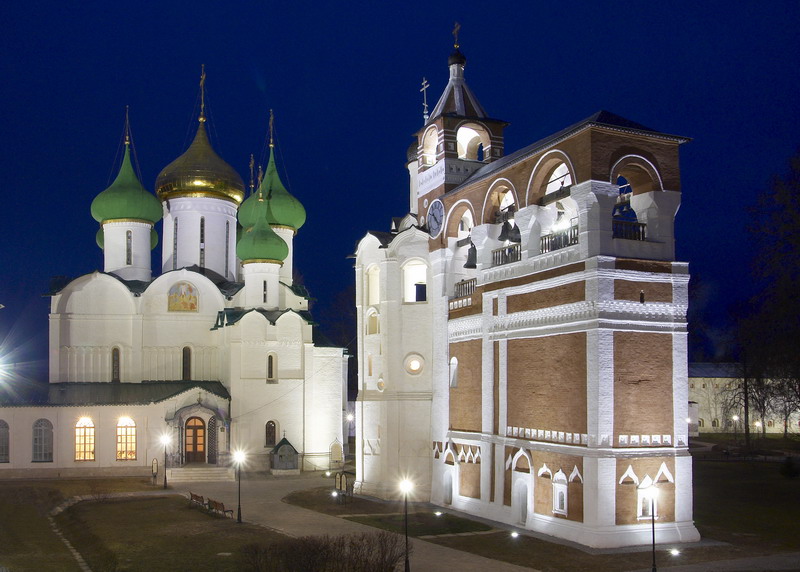Kremlin of Suzdal
The Kremlin is the heart of Suzdal and the oldest part of the city. According to records, the city was first mentioned in 1024, but archaeologists believe the Kremlin dates back to the 10th century. Surrounded by a ring of earth ramparts with wooden walls and towers on top, the Kremlin was an aristocratic part of town, intended for the prince's court and bodyguard as well as for the highest clergy. The Kremlin’s ramparts and moats, several churches, the archbishop's residence, and the ancient Cathedral of the Nativity of the Virgin have all been preserved.

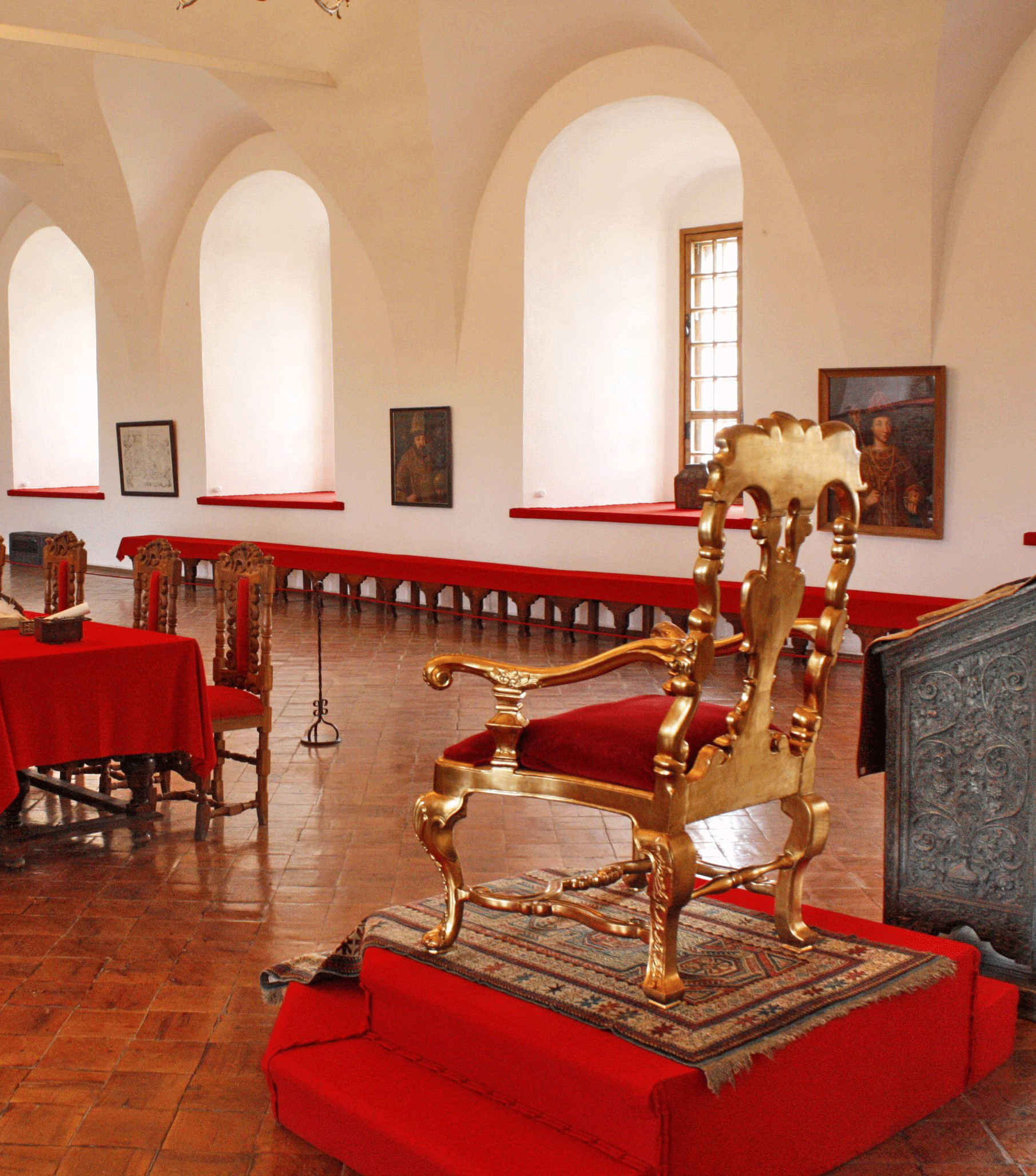
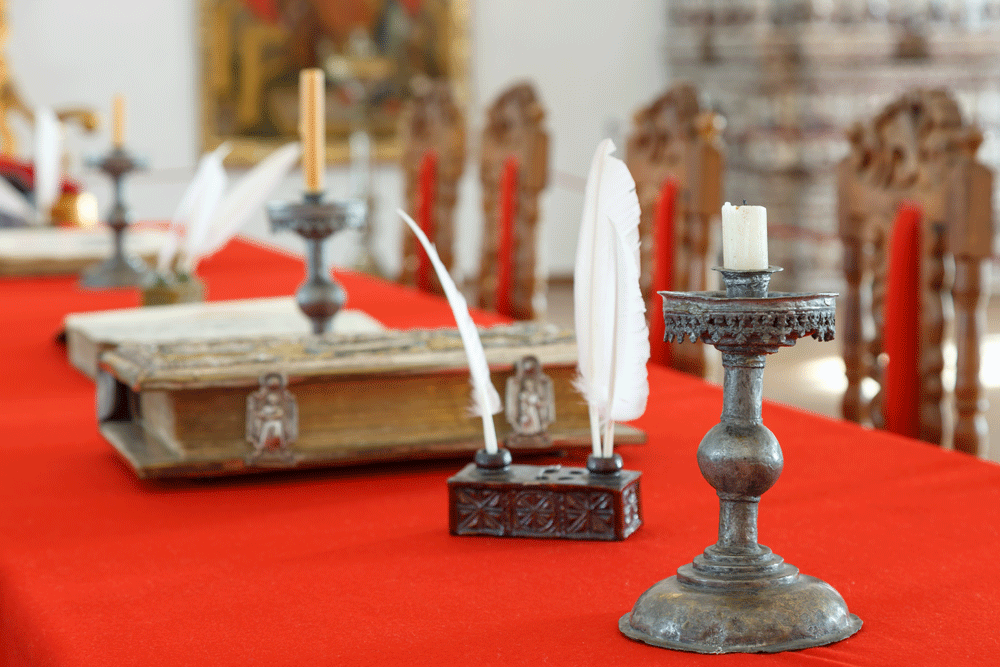
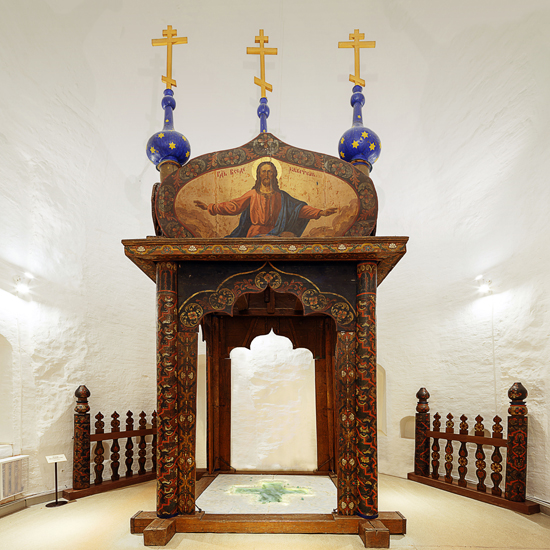
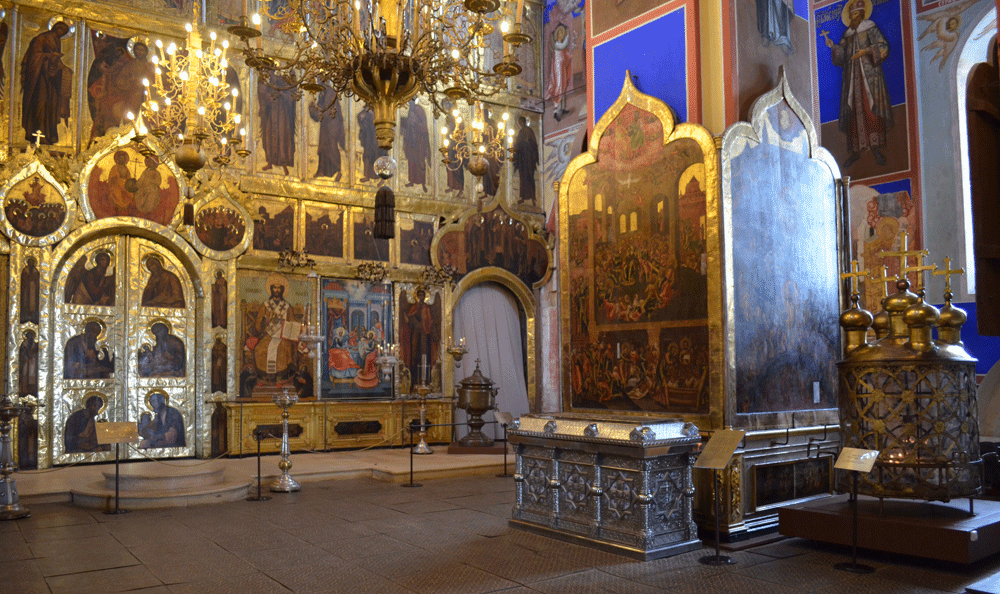
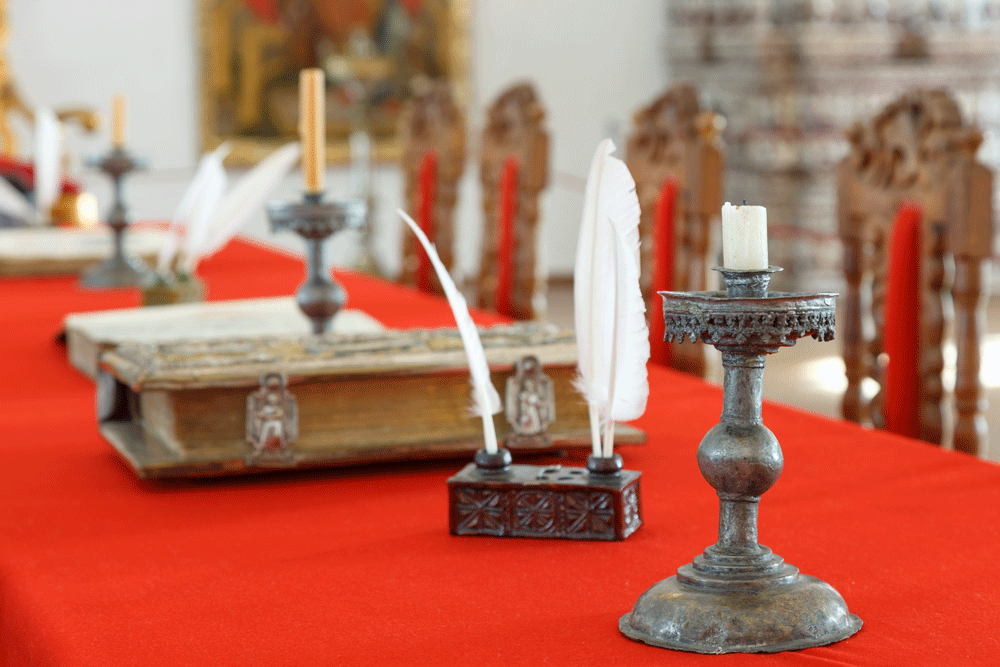
Museum of Wooden Architecture
On the place of the former monastery of St Demetrius one can find another marvel of traditional Russian architecture – an open-air Museum of Wooden Architecture. Several churches, houses, and other authentic 18th and 19th-century wooden buildings were brought here from all over the Vladimir region in the 1960–1970s. The man-made beauty of the monuments of folk architecture merged wonderfully with the landscape of centuries-old Suzdal.
The Church of the Transfiguration (1756) seems to be a town cut in wood, with its parts of different sizes and shapes ingeniously connected by the carpenters who built the entire church without metal nails. The recently reconstructed Church of the Resurrection (1776) belongs to the type of “boat-shaped” churches, when all parts of the building stretch along one axis. The ship (bark, or boat) is an ancient Christian symbol comparing the Church to the Noah’s Ark. The church’s interior is that of a typical modest village church. The exhibition in the house of a peasant family of moderate means acquaints the visitors with the way of life of these people, hardworking and skillful. A “well-to-do” peasant’s two-story house with a covered yard, a dwelling area on the upper floor and a weaving workshop on the lower one – presents another mode of life.
Windmills from the south area of the Vladimir region, a well with a treadwheel, bathhouses in the vegetable gardens and riverside barns on stilts make this recreated village more vivid and realistic.
The Museum of Wooden Architecture is a venue for various Suzdal festivals – Maslenitsa Festival with its unforgettable traditional goose fights, in February or March, the Festival of Folk Crafts, on the day of Pentecost in May or June and the already internationally recognized Cucumber Festival, in July.
The Russian House souvenir shop is located in one of the buildings of the Museum.

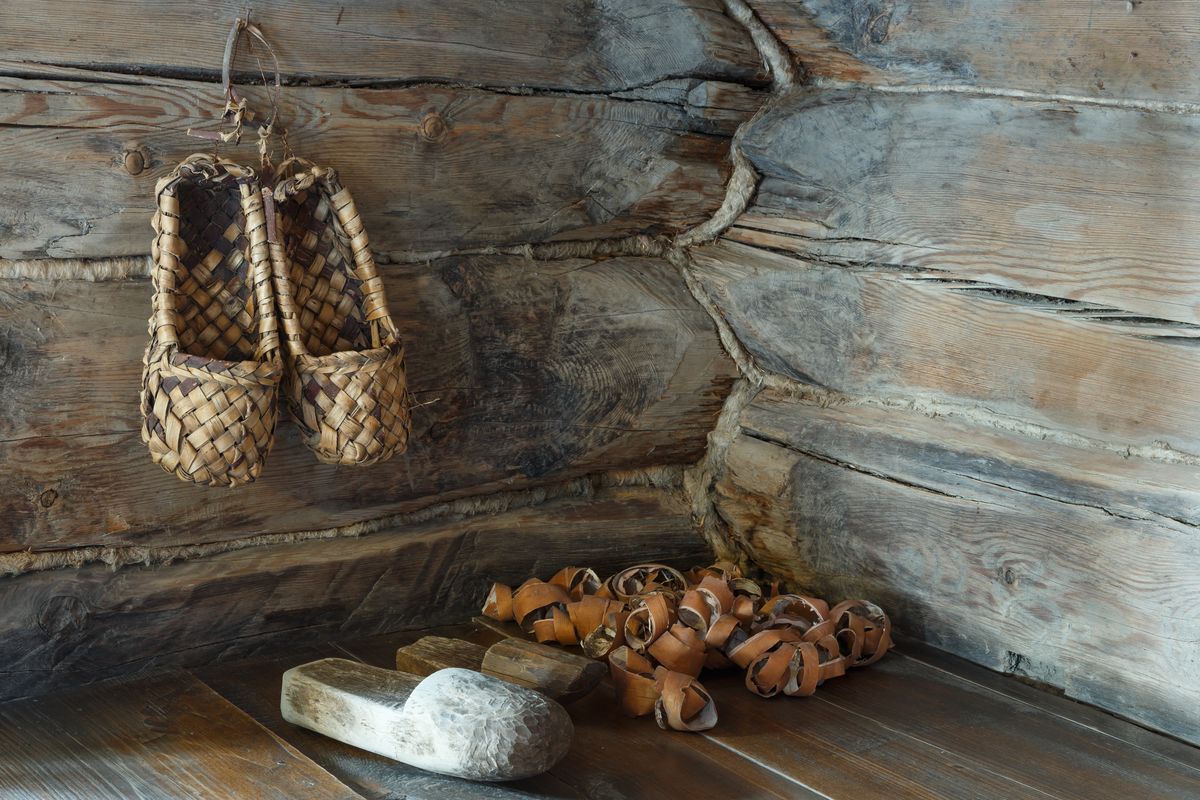
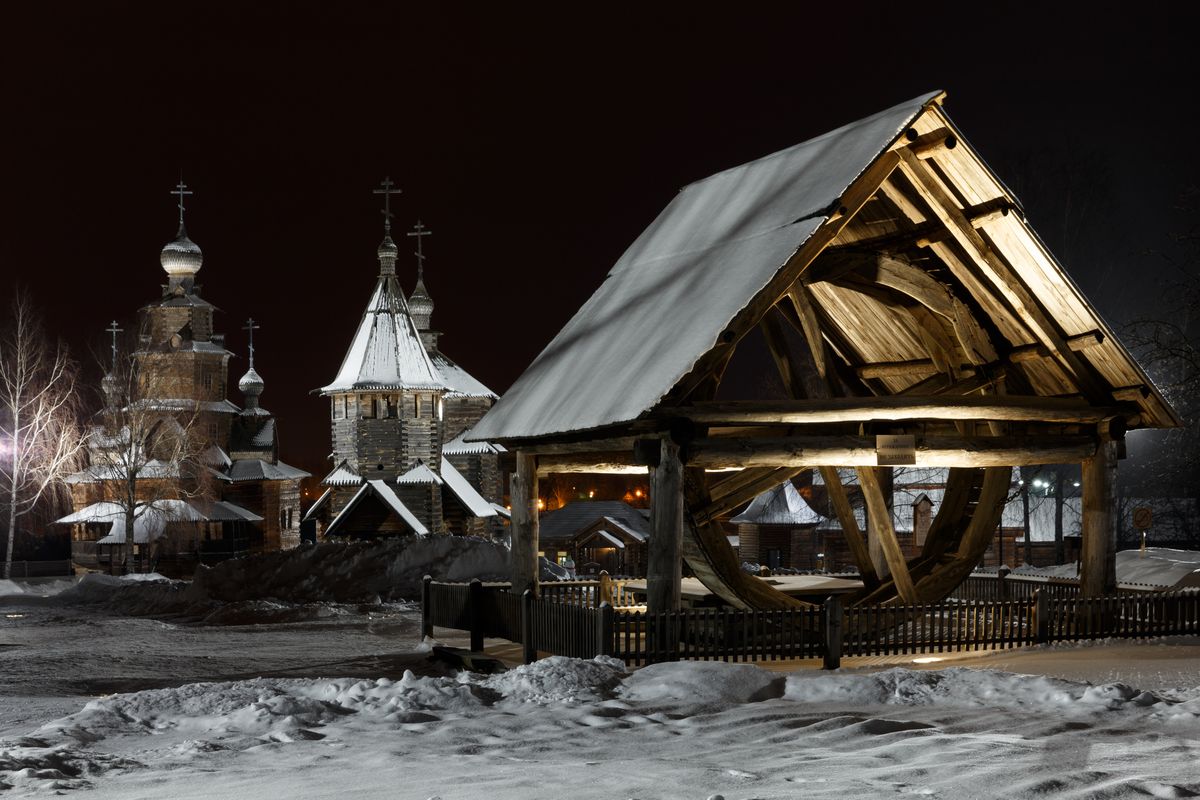
The Monastery of the Saviour and St Euthymius Museum Complex
The imposing architectural ensemble of the Monastery of the Saviour and St Euthymius “stands out vividly like a city” on a high steep bank of the Kamenka river. Prince Boris – of Suzdal and Nizhni Novgorod – founded it in 1352. St Euthymius, an associate of St Sergius of Radonezh, became the monastery's first hegumen.
In 1642, Prince Dmitri Pozharsky, a Russian national hero, was buried here.
The present-day architectural ensemble of the monastery was formed from the 16th to the 19th century. After 1917, the monastery precinct housed a prison and a reformatory. It was in the mid-1960s, when the ensemble came into the possession of the museum and the restoration work started on a large scale here. Monastery buildings were reconstructed and different exhibitions were opened there. An unusual “museum town” was created with a variety of museum exhibitions, concerts of bell music, a sweet-scenting herbal garden, the annual Apple Feast of the Saviour, the unforgettable performance of the Blagovest male a cappella choir – all this and much more is offered to the visitors in the Monastery of the Saviour and St Euthymius Museum Complex today.
